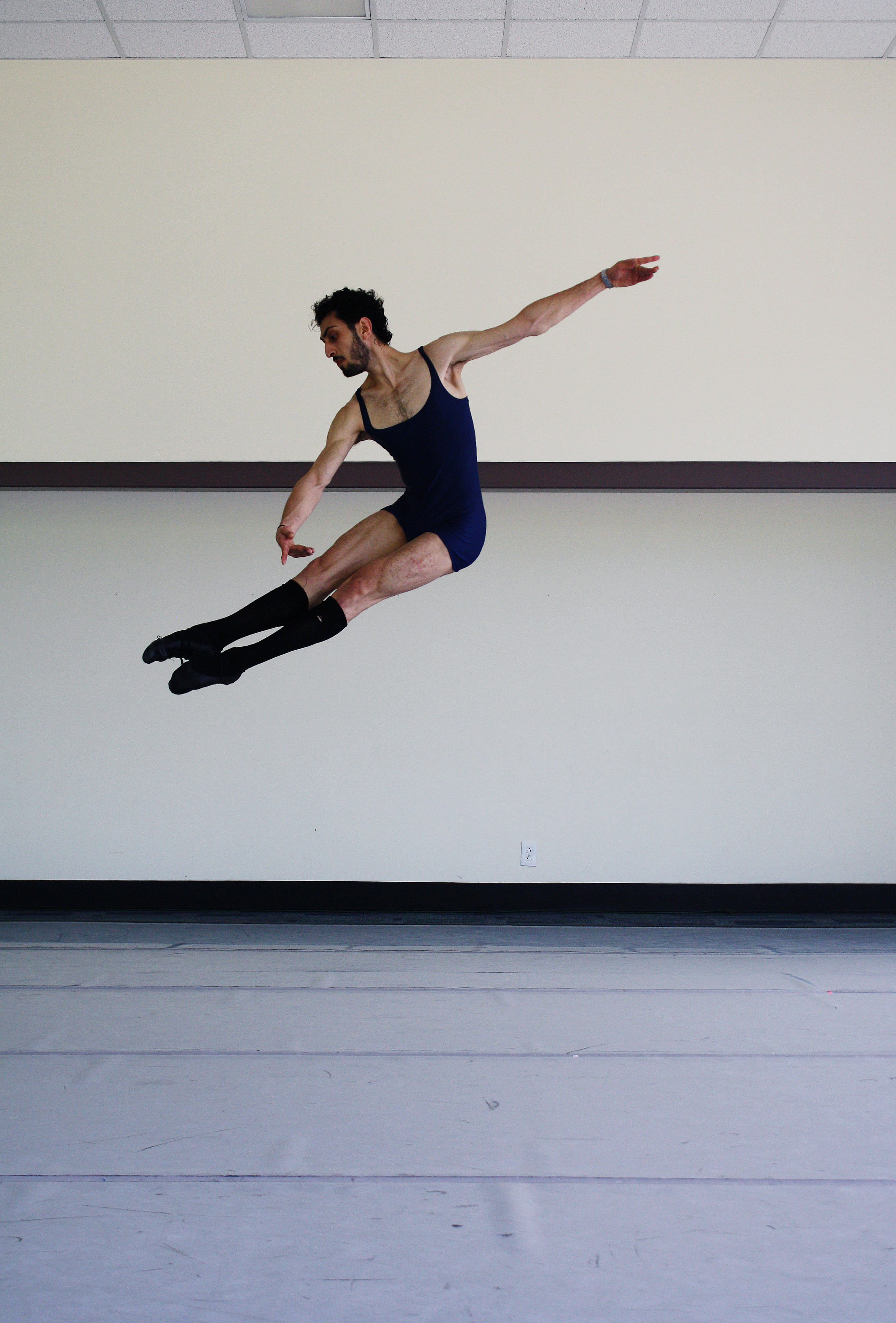A few months ago, something cool happened in ballet class.
TEACHER: “After the pirouette, ladies: tombé, pas de bourree, glissade, jeté. Men: tombé pas de bourre, [crazy jump looks like a pas de chat caught in the spin cycle of a washing machine]. Got it?”
Teacher looks around room, scrunches up face, inhales
“Well…actually, if you want, ladies, you could-uh-do the men’s jump if you want to. I guess. And. Well. I guess guys could…if you want you could jeté… YOU KNOW just everyone do whatever you want just pick one okay? We can be, uh, gender neutral or something.”
When I heard the words “gender neutral” in ballet class, I was floored. I mean, it never happened again, but clearly the teacher had been a part of a larger discussion! The execution lacked some confidence, but I really appreciated the effort!
I’m a gender non-binary dancer who takes a lot of ballet, and stuff gets weird sometimes. When I take a class where women are instructed to be super feminine, and men have to be super masculine, I leave feeling uncomfortable and out of place. As dancers, we get to express a greater range of emotions than we are ordinarily allowed to express. In my day-to-day life, I swim upstream to present in a more masculine way. I love when I can express that masculinity through my dancing by jumping, turning, kicking, and putting lots of power behind my movement. However, as a dancer, I am rarely encouraged to move in this way. I am asked to be feminine — whether sultry, powerful, or delicate — always feminine. And it isn’t that I can’t or don’t want to move in a feminine way, it’s just difficult to express myself in a style where I always have to attach that label to my movement.
With dance studios beginning their seasons, this seems like an apt time to talk about gender in dance class and some changes we can implement to make class more comfortable for people of all genders.

I’m not talking about making any radical changes here. We can start with small things, like using the phrase “dancers” instead of “ladies and men” or “girls and boys.” You’re still addressing the class, you’re just not gendering them.
Going back to my ballet story from earlier, a great way to give traditionally gendered steps in a non-gendered way is to teach them in an “Option A/Option B” format. For example, instead of saying “Men do a tour, women do an arabesque,” you can present the same variations and say, “Option A is a tour, Option B is an arabesque.” The people who really only want to learn the steps canonized for their genders will probably already know which to pick, and everyone else can just choose the one they need more work on. I will always pick arabesque balances because I’m super terrible at them.
Out of respect for tradition, one way to navigate uniforms is to present the leotard and tights option as well as the men’s tights (or leggings) and form fitted tank option and let dancers choose which to wear. Staring at the mirror for anatomical corrections can be uncomfortable as is, it’s far more uncomfortable when you’re wearing clothes that emphasize parts of your body you are making a conscious effort to downplay. Here’s lookin’ at you, last resort boob-featuring leotard.
Same goes for recital costumes. Can everyone wear the same costume? Can you let dancers pick if they want the other gendered version of said costume? I would have rocked the sparkly vest and jazz pants in middle school, just sayin’.
I come to a bit of a snafu when it comes to pronoun usage. For example, I use they/them pronouns. So instead of saying, “That’s Kaitlyn, she can spin on her head,” you would say, “That’s Kaitlyn, they can spin on their head.” Most of the time, I’m in classes with 30 to 40 people. I don’t expect the teacher to remember my name, let alone remember that I use this different pronoun that they might not even know how to use. Teachers usually assume female pronouns, and I roll with it (Though there was this one fascinating class when I was referred to half the time as male and half the time as female. It was incredible and so strange and I think the teacher just couldn’t see me very well).
Trans awareness is only recently pushing its way into mainstream culture. We are all at various points on the learning curve, as long as we’re trying, we are making progress. So don’t sweat it if you make mistakes or bumble your way through de-gendering a grand allegro. And if parts of this post are confusing (like HOW CAN ANYONE BE NOT MALE AND NOT FEMALE?), trust me I’ve been there, and I get it. I’ve put some great links at the bottom of this page that might be helpful.
Also, I want to hear from you! My teaching experience is pretty limited, so dance teachers, please chime in! Are my suggestions feasible? Problematic? Let me know your thoughts.
Resource Links:
- This is Bill Nye talking about sexuality and gender with some vaguely political undertones. What a guy that Bill.
- Here is a pretty thorough trans terminology list, complete with definitions.
- Meet the Genderbread Person. This whimsical little diagram and accompanying website were really helpful to me when I first started researching non-binary genders. It’s got a lot of good graphics and explanations.
